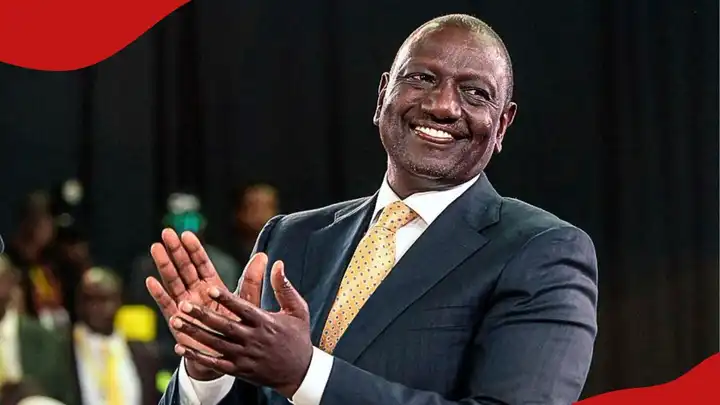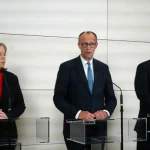Kakamega County, Kenya — President William Ruto has received a major boost in his political charm offensive after a group of opposition leaders publicly endorsed the United Democratic Alliance (UDA) candidate in the upcoming Malava parliamentary by-election.
The endorsement — made during a lively rally in Malava town — marks a significant shift in Western Kenya’s political landscape, long regarded as an opposition stronghold. Analysts say the move not only strengthens Ruto’s influence but also exposes the deepening cracks within Azimio la Umoja, the coalition led by Raila Odinga.
⚖️ A Political Earthquake in Western Kenya
The political atmosphere in Kakamega has been charged in recent weeks, with UDA intensifying its grassroots mobilization. When several prominent opposition figures took the stage beside UDA Secretary-General Cleophas Malala to declare their support for the ruling party’s candidate, it was clear that Western Kenya politics had taken a dramatic turn.
The Malava seat fell vacant following the death of its MP, triggering a by-election that quickly escalated into a showdown between UDA and Azimio — a test of Ruto’s expanding political footprint in regions previously resistant to his message.
“This is not just about electing a new MP,” political commentator Dr. Peter Wekesa told The Standard Digital. “It’s about proving whether Ruto’s government has managed to convince Western Kenya that aligning with the ruling party brings tangible benefits.”
🗳️ Opposition Leaders Switch Sides
The leaders who crossed the aisle cited economic empowerment programs and developmental inclusivity as the key reasons behind their move. Among them were former ODM and ANC coordinators, ward representatives, and local youth leaders — many of whom had previously campaigned against UDA in 2022.
One of the defectors, Hon. Paul Wanyonyi, said the government’s investment in roads, schools, and market projects had “transformed the ground” in Malava.
“We’ve realized that politics of opposition don’t feed our people. Ruto has shown he means business, and we want to be part of that progress,” Wanyonyi declared to a cheering crowd.
UDA’s rally, which drew thousands of residents, mirrored the ruling party’s growing momentum across Western Kenya — a region once considered politically hostile to the Kenya Kwanza administration.
🏗️ Development as a Political Tool
President Ruto’s Bottom-Up Economic Transformation Agenda (BETA) has become a cornerstone of his political strategy. The approach focuses on empowering small traders, farmers, and youth — demographics that dominate Western Kenya.
UDA has been keen to demonstrate the direct benefits of aligning with the ruling government, showcasing recent investments in agriculture, infrastructure, and vocational training.
UDA Secretary-General Cleophas Malala, a native of Kakamega, emphasized this during the rally:
“We’re not here to divide anyone. We’re here to ensure that the people of Western Kenya are part of Kenya’s growth story. Development doesn’t come through opposition — it comes through partnership.”
This message has resonated with many locals who feel left out of national development priorities during the years their leaders sided with the opposition.
🧩 Azimio’s Growing Struggles
Meanwhile, the Azimio coalition is facing increasing challenges in maintaining unity and relevance, particularly in Western Kenya. Many local leaders have expressed frustration over what they describe as a “lack of clear direction” following the National Dialogue Committee (NADCO) talks and internal succession uncertainties.
ODM Secretary-General Edwin Sifuna, however, dismissed the defections as “short-term political opportunism.”
“These people are not driven by ideology; they are chasing personal gain. Western Kenya remains Azimio territory,” Sifuna asserted in Nairobi.
Still, political analysts warn that such rhetoric might not be enough to contain the steady erosion of Azimio’s grassroots base, particularly among youth who view UDA as more responsive to economic realities.
🧭 Western Kenya’s Changing Political Identity
Western Kenya — home to more than 2.2 million registered voters — has historically served as a political swing region. Traditionally supportive of Raila Odinga and Musalia Mudavadi, the region’s voters are increasingly prioritizing development over political loyalty.
In previous elections, the area was seen as a guaranteed vote basket for the opposition. But UDA’s consistent presence and visible government projects have begun to reshape local perceptions.
“People here are pragmatic. If they see roads being built and youth groups getting funding, they’ll naturally support whoever delivers,” said political analyst Prof. Joseph Owino of Maseno University.
UDA’s expanding presence across Kakamega, Bungoma, and Vihiga counties has already triggered what experts call a “development-centered realignment” — where political allegiance follows tangible change.
🕹️ What the Malava Race Means for Ruto’s 2027 Ambitions
The Malava by-election may seem small in numbers, but politically, it’s monumental. A UDA victory would reinforce President Ruto’s strategy of penetrating opposition zones ahead of the 2027 general election.
By securing endorsements from local opposition leaders, Ruto not only boosts UDA’s numbers but also undermines the narrative that Kenya Kwanza is a regional or tribal movement.
“Every seat matters,” explained Dr. Wekesa. “The more local leaders Ruto convinces to join him now, the harder it becomes for Azimio to rebuild in 2026 and 2027.”
For Ruto, Western Kenya’s support is both symbolic and strategic — it represents national unity, a key message he has emphasized since taking office.
⚔️ The Political Symbolism Behind the Defections
Political watchers note that the timing of these defections is critical. They come just months after Ruto intensified his outreach to regional leaders through the Western Kenya Economic Bloc, promising infrastructure and agricultural investment.
The optics of opposition figures backing a government candidate suggest that Ruto’s economic diplomacy is paying off.
Some see it as part of a broader plan to weaken Raila Odinga’s influence and consolidate Kenya Kwanza as the default political choice nationwide.
“Ruto is playing a long game. By 2027, he wants to make it politically costly for anyone to oppose the government,” said Prof. Owino.
💬 Public Reaction: Cautious Optimism
Local residents in Malava expressed mixed reactions to the developments. Some hailed the opposition leaders’ decision as “a smart move” that could unlock government projects.
“We’ve been voting for the opposition for decades, but our roads are still bad,” said Sarah Namalwa, a teacher. “Maybe it’s time we try something new.”
Others, however, remained skeptical, accusing defecting leaders of betraying the people’s will for personal favors.
“They just want jobs and tenders. They don’t care about us,” lamented Moses Otieno, a boda boda rider.
🔮 Looking Ahead: The New Face of Kenyan Politics
The shifting allegiances in Malava reflect a broader pattern across Kenya — where development-based politics are slowly replacing ethnic and party loyalty.
President Ruto’s administration appears to be capitalizing on this transformation by positioning UDA as the party of action, inclusivity, and grassroots empowerment.
If UDA wins the Malava by-election, it will not only hand Ruto a symbolic victory but also embolden the party’s efforts to expand its footprint in other Azimio-dominated regions like Nyanza and Coast.
🕊️ Conclusion: Ruto’s Strategy Is Working — For Now
President William Ruto’s strategy of political persuasion through development and inclusivity appears to be bearing fruit. The endorsement of a UDA candidate by former opposition leaders in Malava marks a turning point in Western Kenya’s politics.
While Azimio may dismiss the defections as inconsequential, the growing trend of leaders aligning with UDA suggests that the ground is indeed shifting.
The battle for Kenya’s future political landscape has already begun — and if Malava is any indication, Ruto’s influence is expanding far beyond his traditional base.








